Search
Summary 
Loading AI-generated summary based on World History Encyclopedia articles ...
Search Results
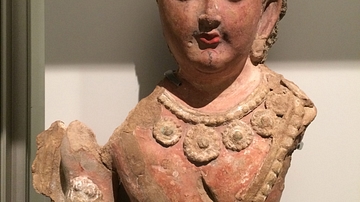
Image
Bodhisattva Bust
A bust of a bodhisattva, Kucha, Kumtura (Xinjiang), China. 6th-7th century CE. (Musée Guimet, Paris)
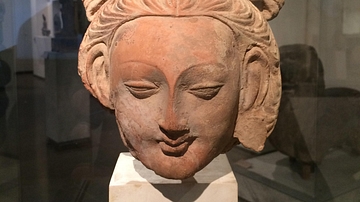
Image
Chinese Bodhisattva with Diadem
A bodhisattva with diadem from Tumshuq, Toqquz-sarai, Small Temple D (Xinjiang), China. 6th-7th century CE. (Musée Guimet, Paris)

Definition
Qanat
The qanat (called foggara in North Africa and the Levant, falaj in the United Arab Emirates and Oman, kariz in Iran, and puquios in Peru) is an ancient Middle Eastern irrigation technique in which a long tunnel is dug into arid land that...
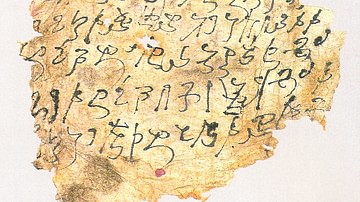
Definition
Kharosthi Script
The Kharosthi script (also known as 'Indo-Bactrian' script) was a writing system originally developed in present-day northern Pakistan, sometime between the 4th and 3rd century BCE. Kharosthi was employed to represent a form of Prakrit (Middle...

Article
Jade in Ancient China
Jade (nephrite) was regarded as the most precious stone in ancient China, and it symbolised purity and moral integrity. Prized for its durability and magical qualities, the stone was laboriously carved and polished into all manner of objects...

Image
Princess of Xiaohe
"Beauty of Xiaohe", one of the Tarim mummies, buried c. 1800-1500 BCE, excavated from Xiaohe (Little River) Cemetery 5, Charqilik (Ruoqiang) County, Xinjiang, in 2003. Secrets of the Silk Road Exhibit, Houston Museum of Natural Science...
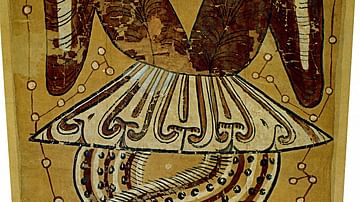
Image
Fuxi & Nuwa
Tang Dynasty depiction of the god Fuxi and his sister-wife Nuwa.
Xinjiang Uighur Autonomous Region Museum.
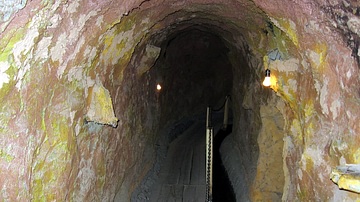
Image
Turfan Water System Underground Channel
The underground channel of a qanat in the Turfan water system in the Turpan Depression of Xinjiang, China.
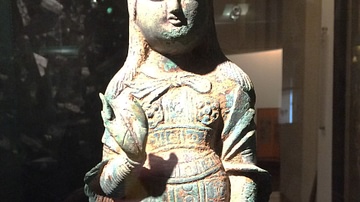
Image
Guardian King from Silla
The guardian king belongs to one of the eight catagories of Buddhist beings: that of the heavenly musicians (gandharva). One can identify this statue as such because of its wild beast headdress. Technically perfect, this bronze Korean statue...